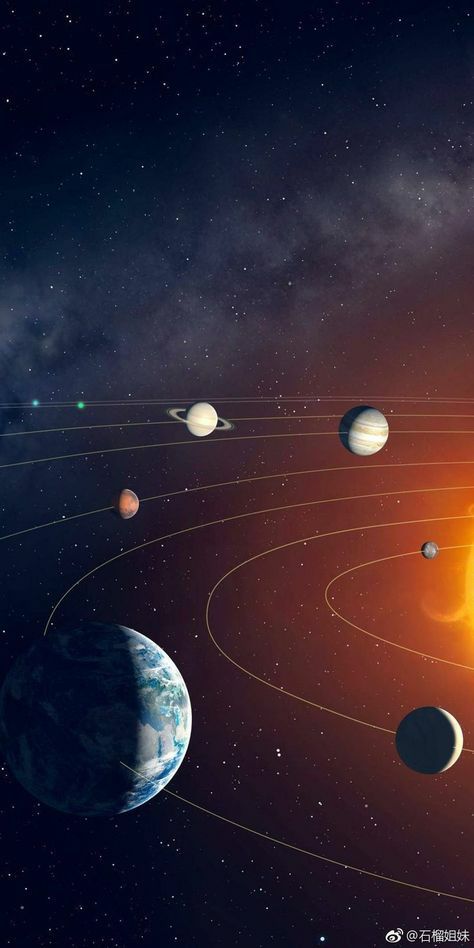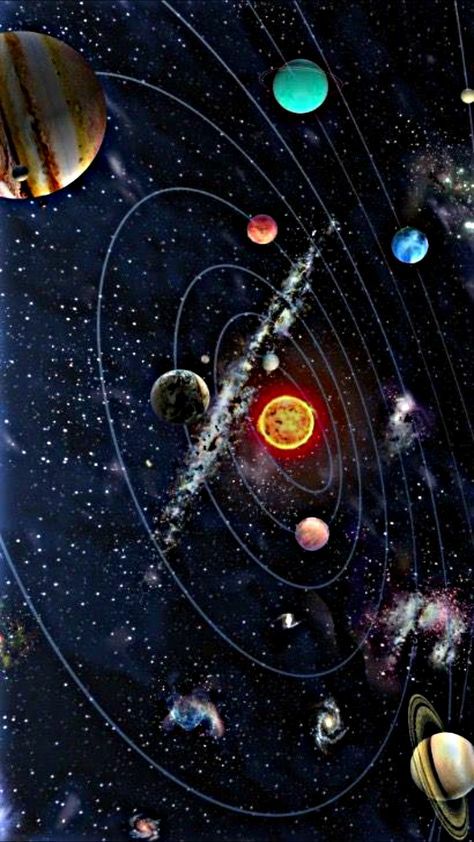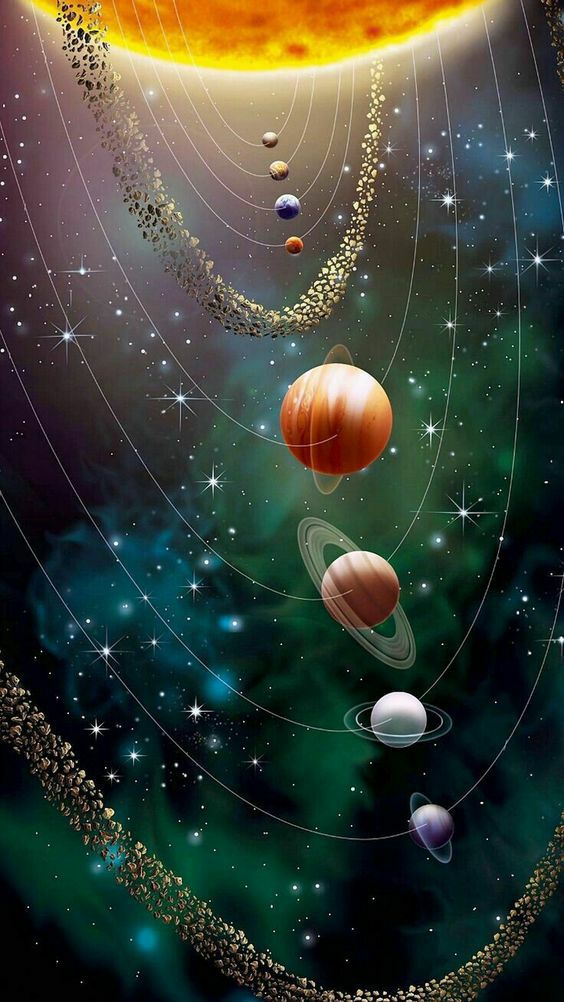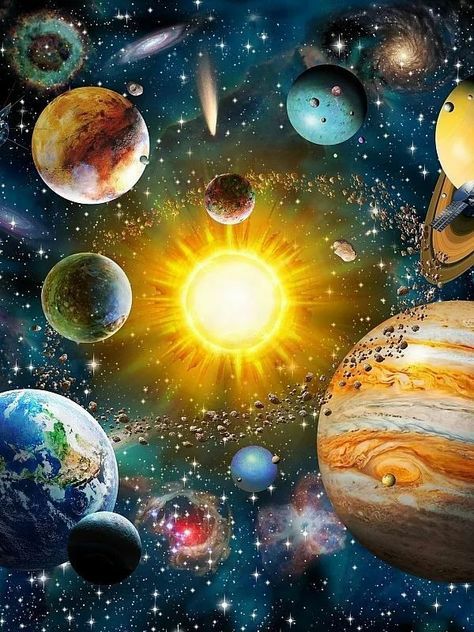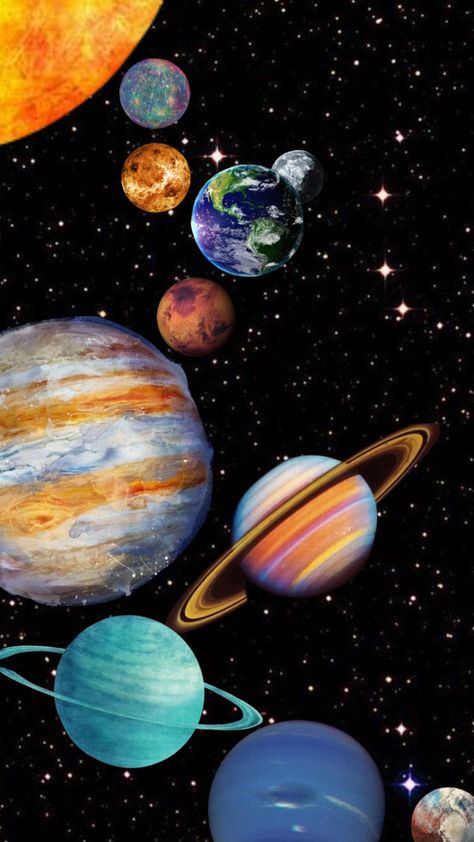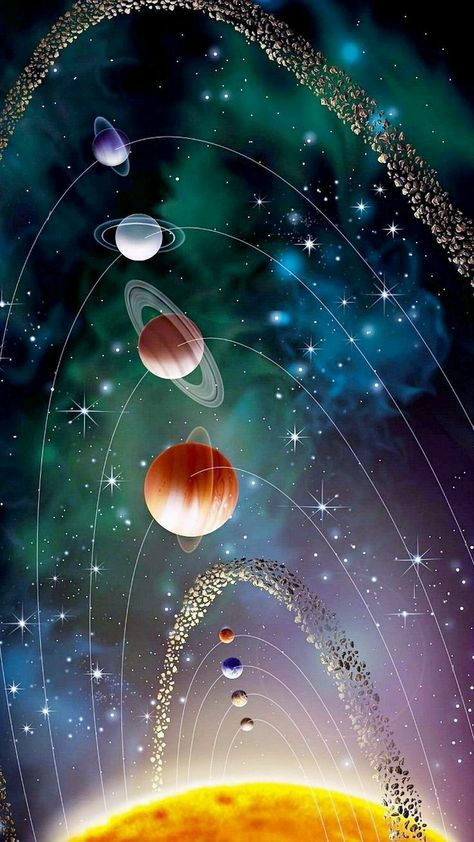Learn about the Solar System.
The solar system is the collection of celestial bodies that orbit around the sun, a yellow dwarf star located at the center of the Milky Way galaxy. This system is comprised of eight planets, dwarf planets, moons, asteroids, comets, and other objects. It is estimated to be about 4.6 billion years old and formed from a cloud of gas and dust.
The eight planets in the solar system are Mercury, Venus, Earth, Mars, Jupiter, Saturn, Uranus, and Neptune. These planets differ in size, composition, and atmospheric conditions. Four of the planets, Mercury, Venus, Earth, and Mars, are terrestrial planets, meaning they are mostly composed of rock and metal. The other four planets, Jupiter, Saturn, Uranus, and Neptune, are gas giants, composed mostly of hydrogen and helium.
In addition to the planets, there are also five officially recognized dwarf planets in the solar system: Ceres, Pluto, Haumea, Makemake, and Eris. These objects are similar to planets in many ways but are smaller and do not clear their orbits of other debris.
The solar system also includes more than 200 moons, some of which are larger than the smallest planets in the system. For example, Jupiter has 79 known moons, four of which are larger than Earth’s moon. Saturn has 82 known moons, and Uranus and Neptune each have more than a dozen.
Asteroids and comets also populate the solar system. Asteroids are small, rocky objects that orbit the sun, while comets are icy objects that come from the outer reaches of the solar system. Some comets have highly elongated orbits that take them far beyond the planets, while others have orbits that bring them closer to the sun.
The solar system is held together by gravity, the force that pulls objects towards one another. The sun’s gravity keeps the planets in orbit around it, while the planets’ gravity keeps their moons in orbit around them. The gravity of the largest planets also helps to shape the orbits of smaller objects in the solar system, such as asteroids and comets.
Studying the solar system can provide important insights into the formation and evolution of our own planet and the universe as a whole. Scientists have used spacecraft to explore the planets and moons in our solar system, learning about their geology, atmospheres, and potential for life. As technology advances, we can continue to learn more about the solar system and our place within it.
In conclusion, the solar system is a complex and fascinating collection of celestial bodies that have captured the human imagination for centuries. From the rocky planets to the gas giants, the moons, asteroids, and comets, each object in the solar system has its own unique characteristics and history. Studying the solar system can help us better understand the origins and dynamics of the universe we inhabit.
Hits: 3
